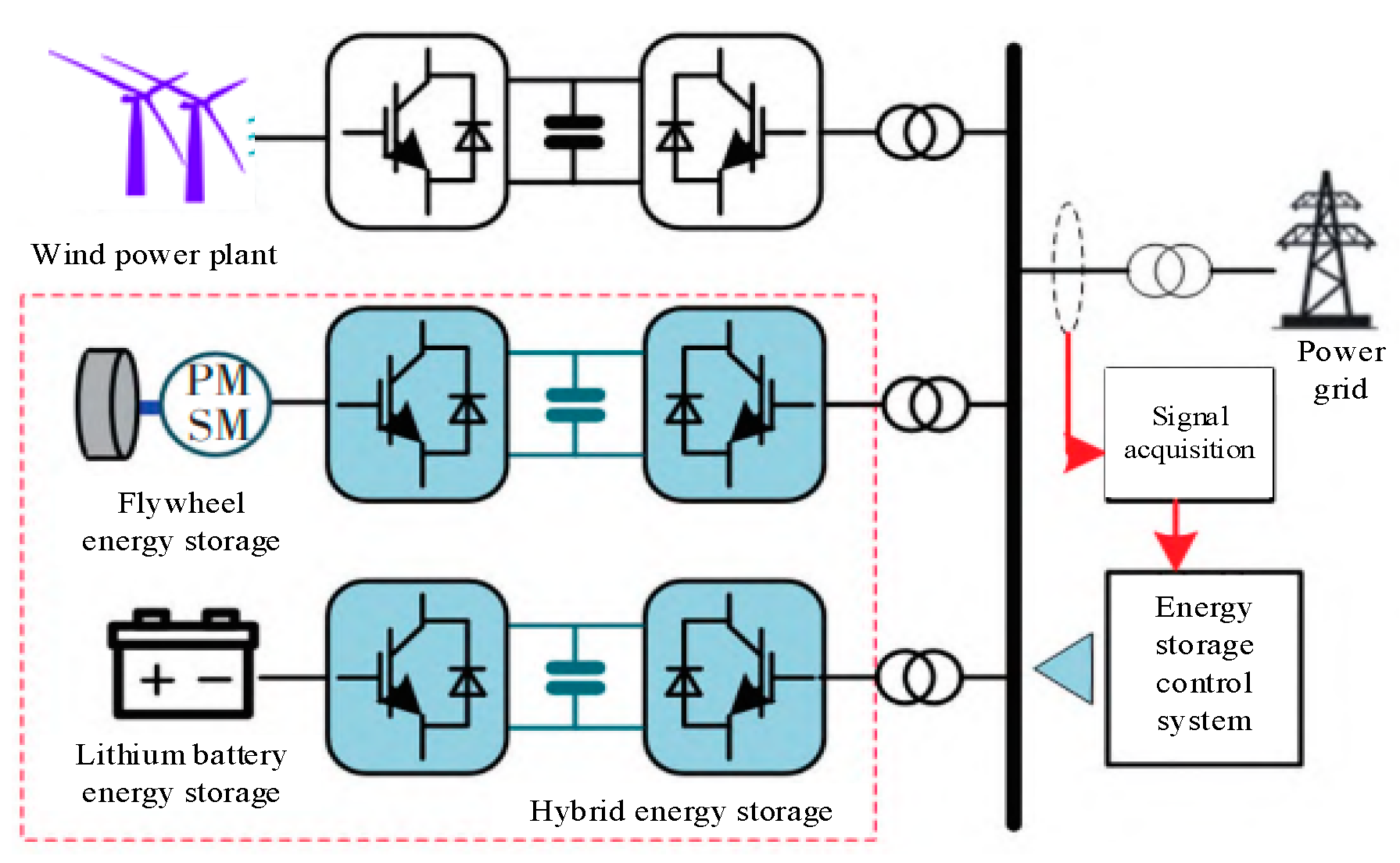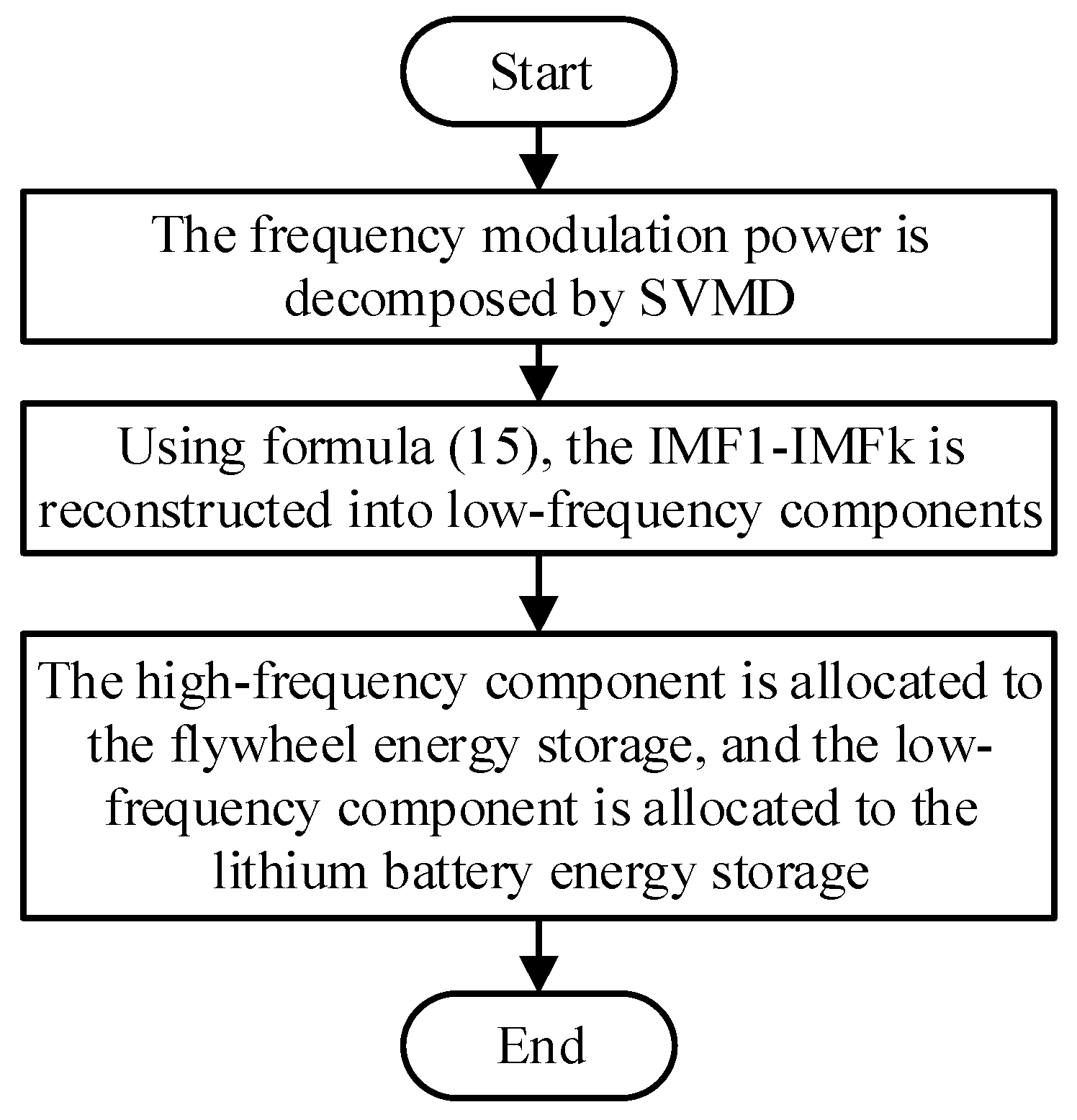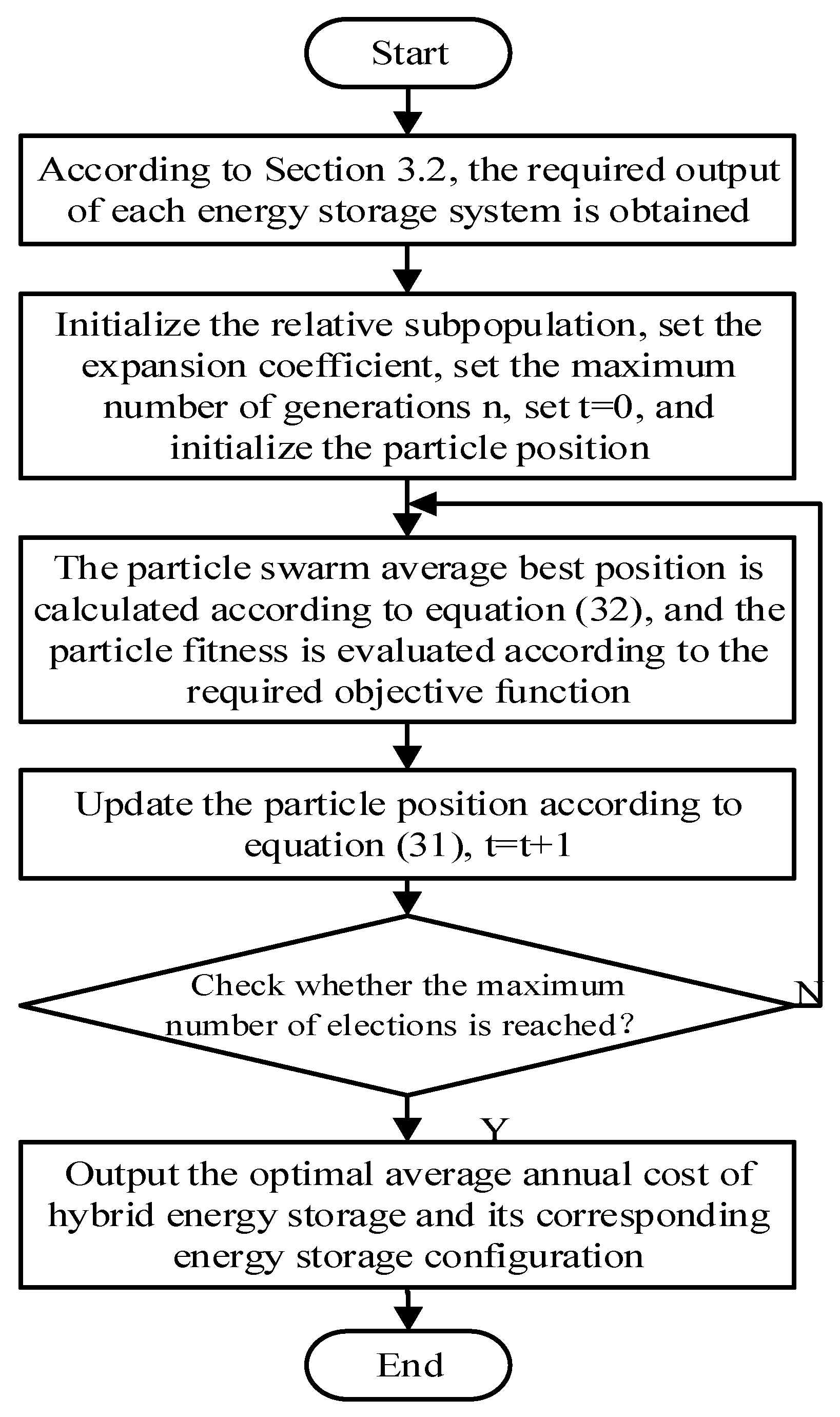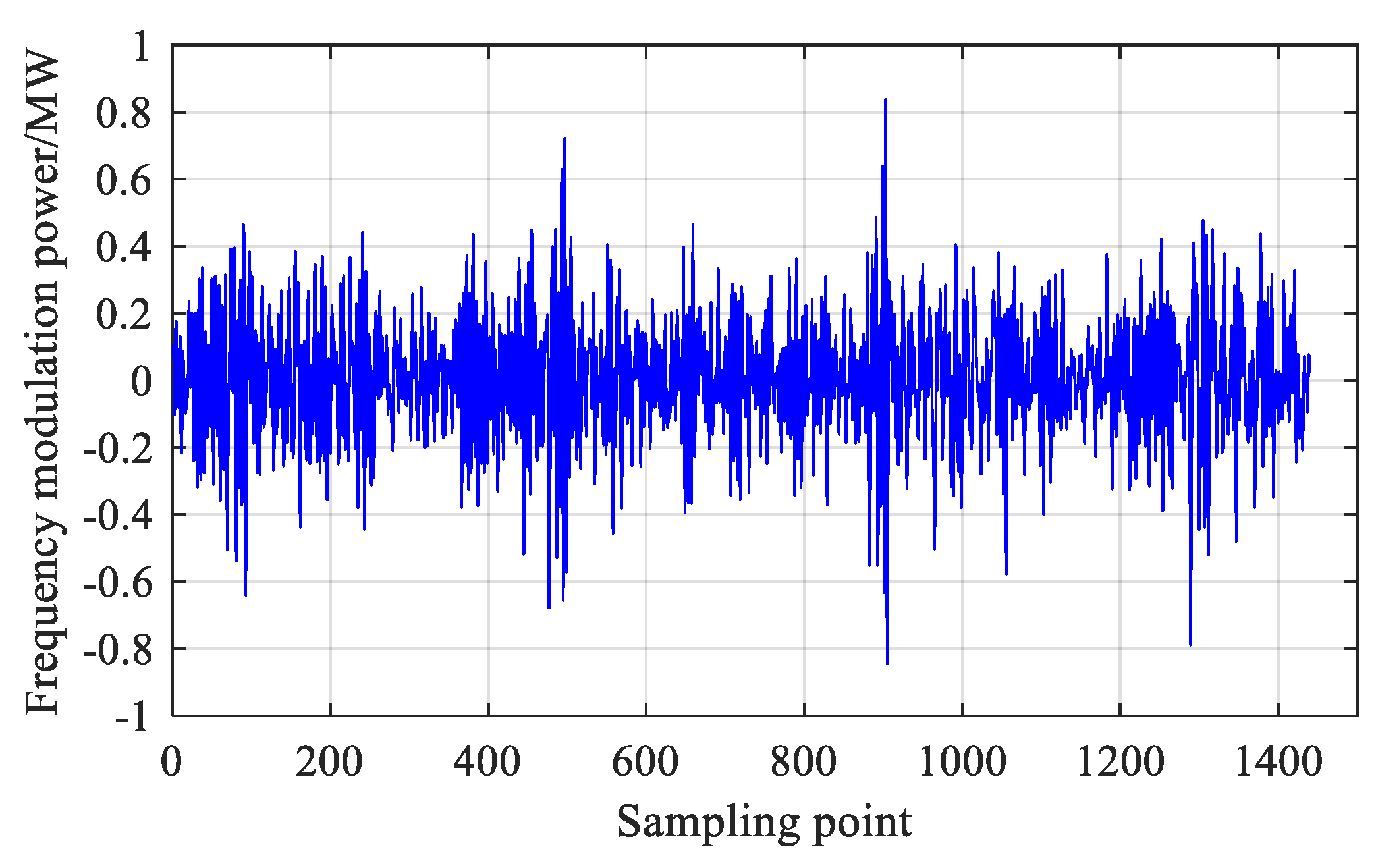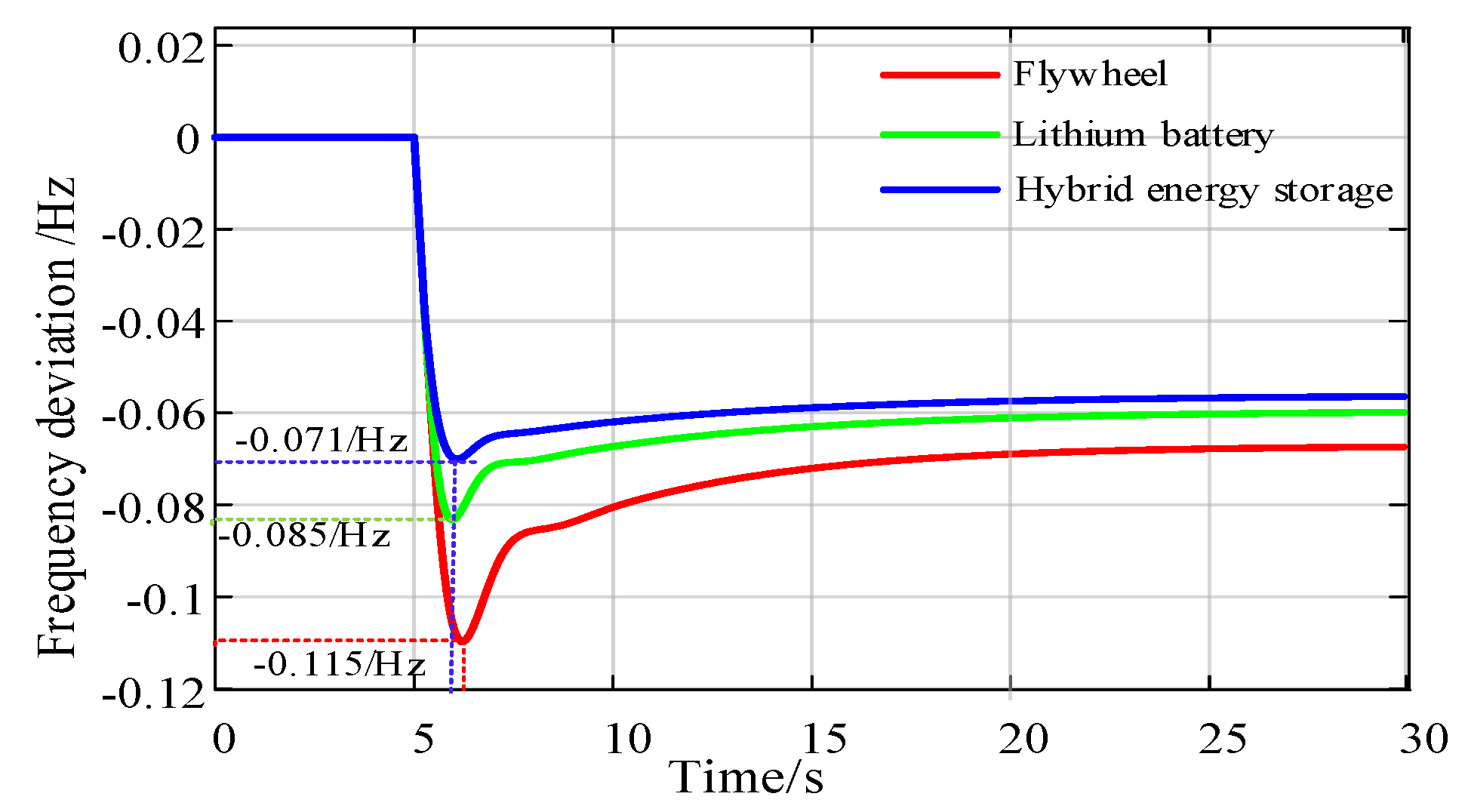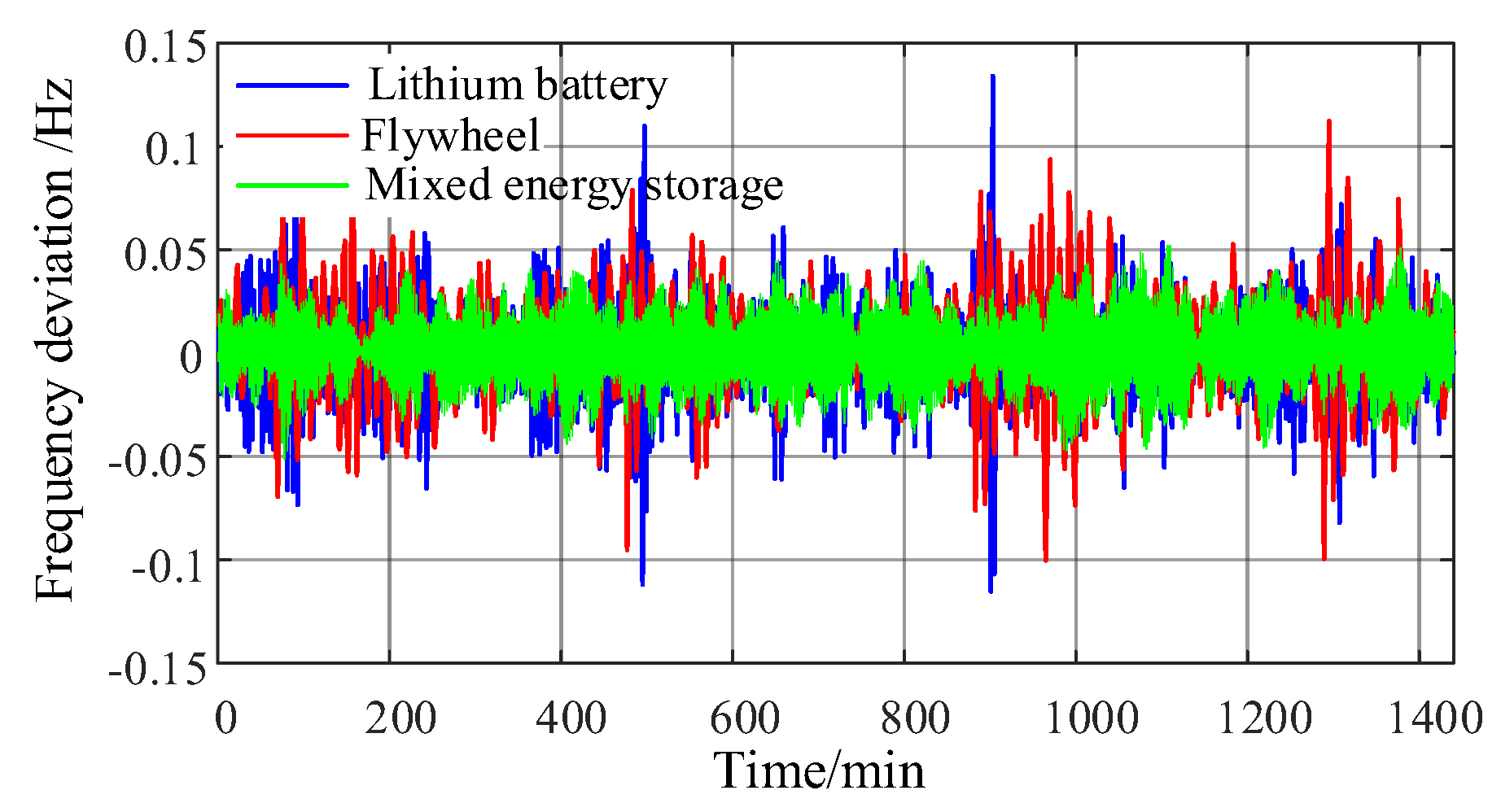1. Introduction
With the increasing amount of global attention paid to sustainable development, the proportion of new energy in energy supply is constantly increasing. According to the statistics of the National Energy Administration, as of the end of February 2023, the cumulative installed power generation capacity of the country is about 2.60 billion kilowatts. Among them, the installed capacity of wind power is about 370 million kilowatts, with a year-on-year growth rate of 11.0% and rapid development [
1]. However, due to the instability and intermittence of new energy generation, new energy cannot always meet the bidirectional power demand of the system when participating in FM [
2]. Energy storage frequency modulation technology can respond quickly and provide stable adjustments when new energy power supply is insufficient or there is a sudden fluctuation in load to ensure the smooth operation of the power system [
3,
4].
At present, a large number of studies have examined the involvement of energy storage in frequency modulation. Refs. [
5,
6] uses dynamic control strategies to coordinate power sharing between batteries and fuel cells to adjust frequency fluctuations. Ref. [
7] studied the benefits of batteries in participating in frequency modulation and wind power peaking and limiting the output slope rate of wind farms and concluded that the benefits were the highest when energy storage participated in the frequency modulation of power systems. Ref. [
8] compared the operating costs and benefits of lead-acid batteries, nickel–cadmium batteries, and sodium–sulfur batteries participating in primary frequency modulation and found that within a certain range of energy storage capacity, battery energy storage has the greatest application potential in primary frequency modulation in the next 3 to 5 years. Ref. [
9] demonstrates that the battery energy storage system can reduce the impact of wind forecasting errors, while extending the service life of the energy storage system and making the coordination between short-term energy storage systems and wind farms more flexible. Ref. [
10] uses the difference between the grid-connected reference power and the original wind power output to decompose the reference power, obtains the time spectrum through Hilbert transform, determines the appropriate dividing frequency, and reconstructs the high- and low-frequency components. Then, combined with the output data of wind farms, an economic cost calculation model of an energy storage system based on the life cycle cost theory is established. The optimal configuration scheme is obtained. Ref. [
11] considers the fluctuation of wind power output and the operational constraints of the battery system itself and proposes an energy storage capacity allocation strategy for the combined wind power system to save the system’s investment cost and operation and maintenance cost. Ref. [
12] adopted the fully integrated empirical mode decomposition based on adaptive noise to realize time–frequency analysis of load power, established an optimization model of hybrid-energy storage capacity configuration aiming at lifetime economic costs, and determined the optimal filtering sequence and corresponding energy storage configuration scheme.
The commonly used methods for signal decomposition include wavelet analysis [
13], first-order inertial filtering [
14], and Kalman filtering [
15]. Among them, wavelet analysis has a large amount of computation and a long calculation time, and the first-order inertial filter has a poor effect on the decomposition of low-frequency signals, while the accuracy of Kalman filter is low, so it is not suitable for the decomposition of primary frequency modulation power instructions. Variational mode decomposition (VMD) is essentially a quasi-orthogonal analysis method that is transformed into a frequency-mixed variational problem by Wiener filter and Hilbert transform [
16]. VMD has unique advantages as a completely non-recursive signal processing algorithm. However, when decomposing VMD, it is affected by the IMF number K and the quadratic penalty factor α, which will greatly reduce the decomposition effect [
17] if not properly set. SVMD does not need to determine the number of IMF and has better robustness compared with the initial value of the modal center frequency [
18]. Therefore, this paper uses the SVMD algorithm to decompose the primary frequency modulation power instructions.
In order to solve the problem of frequency modulation power deviation caused by the randomness and volatility of wind power output, the main contributions of this paper are as follows: (1) the sequential variational mode decomposition method effectively solves the problem that VMD parameters cannot be selected adaptively, and the frequency modulation instruction is decomposed into high-frequency demand and low-frequency demand, which effectively solves the problem of the influence of boundary points on capacity allocation; (2) based on the characteristics of large flywheel energy storage output and high frequency, and small lithium battery energy storage output and low frequency, a frequency modulation power distribution strategy considering hybrid-energy storage characteristics was proposed. Flywheel energy storage undertook high-frequency tasks, and lithium battery energy storage undertook low-frequency components, fully playing into the advantages of flywheel energy storage with high life cycles and large power in a short period of time. At the same time, the frequent charge and discharge of lithium batteries are avoided.
6. Conclusions
Aiming at the problems of slow power response and high long-term use cost of single-battery energy storage system in wind-storage system, a new hybrid flywheel-battery energy storage system is established in this paper. Through simulation analysis, the following conclusions can be drawn:
(1) By decomposing primary frequency modulation power instructions, lithium battery energy storage distributes low-frequency power instructions, which can effectively avoid the problem of frequent outputs during frequency modulation. At the same time, the flywheel energy storage responds to the high frequency part of a frequency modulation command, which can give full play to the advantages of more charge and discharge times of flywheel energy storage.
(2) Based on the typical daily frequency modulation power, the optimization result of flywheel energy storage capacity is 0.54 MWh and 0.24 MW, and the capacity of lithium battery is 0.24 MWh and 0.55 MW. The feasibility of this method is verified by comparing the frequency modulation effect of different allocation schemes.
(3) Compared with a single flywheel and a single lithium battery, hybrid-energy storage can effectively improve the primary frequency modulation effect of photovoltaic power generation systems. Under the two scenarios of load step disturbance and continuous random disturbance, the frequency fluctuation range is smaller, and the frequency stability is greatly improved.
The focus of a future paper will be to test the proposed model and method in the real system, so as to improve its practical application value. In the model, the influence factors such as the service life and temperature of the energy storage system will be further considered to make it more perfect and fit the actual project.
